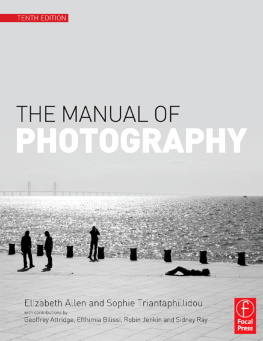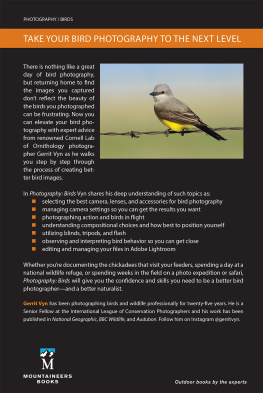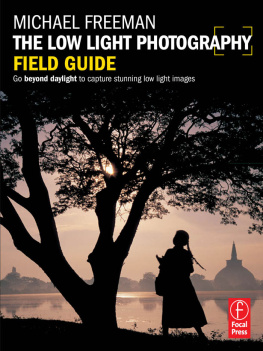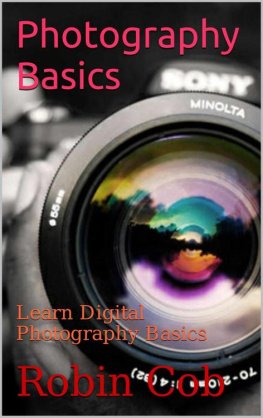Photography
Professional Photography Explained
Techniques, Development and Application
By David Miller
Copyright 2015 by David Miller
All rights reserved. No part of this publication may be reproduced, distributed, or transmitted in any form or by any means, including photocopying, recording, or other electronic or mechanical methods, without the prior written permission of the publisher, except in the case of brief quotations embodied in critical reviews and certain other noncommercial uses permitted by copyright law.
Disclaimer
This document is geared towards providing exact and reliable information in regards to the topic and issue covered. The publication is sold with the idea that the publisher is not required to render accounting, officially permitted, or otherwise, qualified services. If advice is necessary, legal or professional, a practiced individual in the profession should be ordered.
From a Declaration of Principles which was accepted and approved equally by a Committee of the American Bar Association and a Committee of Publishers and Associations.
In no way is it legal to reproduce, duplicate, or transmit any part of this document in either electronic means or in printed format. Recording of this publication is strictly prohibited and any storage of this document is not allowed unless with written permission from the publisher. All rights reserved.
The information provided herein is stated to be truthful and consistent, in that any liability, in terms of inattention or otherwise, by any usage or abuse of any policies, processes, or directions contained within is the solitary and utter responsibility of the recipient reader. Under no circumstances will any legal responsibility or blame be held against the publisher for any reparation, damages, or monetary loss due to the information herein, either directly or indirectly.
Respective authors own all copyrights not held by the publisher.
The information herein is offered for informational purposes solely, and is universal as so. The presentation of the information is without contract or any type of guarantee assurance.
The trademarks that are used are without any consent, and the publication of the trademark is without permission or backing by the trademark owner. All trademarks and brands within this book are for clarifying purposes only and are the owned by the owners themselves, not affiliated with this document.
Table of Contents
Want Free Books?
From time to time I give away free copies of my new releases, but my promotions are very temporary. If youd like to be notified when Im giving my Kindle eBooks away for free, please consider signing up at the following link: http://www.livertol.com/ebooks
*****

My Other Books:
 |
| Essential Oils |
| What They Do & How to Use Them |
| List price $4.99You save - $2 -2.83 (40%-43%) |
| Amazon.com --- Price: 2.99$ |  |
| Amazon.co.uk --- Price: 2.16 |  |
 |
| Baby Names |
| Your Guide to Selection & Meaning! |
| List price $4.99You save - $2 -2.83 (40%-43%) |
| Amazon.com --- Price: 2.99$ |  |
| Amazon.co.uk --- Price: 2.16 |  |
INTRODUCTION:
Capturing and Presenting Imagery
Most lay people see the results of photography, but are not conversant with the process through which the images are created. Note from the outset that photography is a multidisciplinary endeavor that could be qualified as both an art and a science. The technical definition is the practice of creating, developing, and presenting durable images through recording electromagnetic radiation and light (Newhall, 2009). Photography can be done using electronic means by way of an image sensor. Alternatively, it can be achieved through chemical means by way of a light-sensitive material. This material is photograph film in industry parlance. The photographer may use a pair of lens to focus the light naturally emitted by objectives. These are then placed onto a real image, which sits on the light-sensitive material. That surface typically sits within a camera. Photography requires a fixed time exposure under controlled conditions. There is an alternative of using electronic image sensors. These will produce an electrical charge hosted on each pixel. Using modern equipment, it is possible to process and store that information on a digital image file.
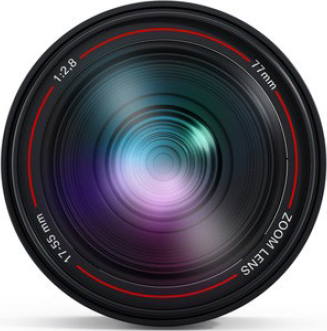
Photography has been noted for its ability to store and preserve memories fixed within a set of images of varying quality. After the first stage of photography, there is a stored data set on a photographic emulsion. This is in an invisible latent image. This image is then developed, using chemical means so it becomes visible. The industry designates the image as being positive or negative. This classification depends upon the purpose for which the photographic material will be used, as well as the method of processing used. Typically, a negative image on film is used to create a positive image on a paper base. This is a print. It can be achieved by using contact printing or a designated enlarger. Applying photography, today, remains wide because of the need to preserve memories. You are likely to find photographers working in manufacturing, photolithography, forensics, medicine, research, business, and entertainment. It is the principle from which emanates the subfields of video production, filming, modern art, and other forms of mass communication. The democratization of photography through the standard camera has meant virtually everybody can have access to it.
Origins and Development
The word, photography combines the Greek root phtos () and the genitive version of phs (). The word also includes the Greek word for light. It ends in the word graph (), which refers to the act of drawing lines. The composite of the word photography is, therefore, drawing with light (Corner, 2007). By 1834, the word was in use even before the process had been fully developed. For example, the French Painter, Hercules Florence, referred to it in his writing. Moreover, the German astrologer, Johann von Maedler, published an article in 1839 referring to photography. Sir John Herschel also used the term in his correspondence at the Royal Society. This shows that as far back as the beginning of the 18th Century, there were references to this process. Our modern conceptualization of photographs are those grainy images that attempted to capture cameos of Victorian life. The world was understandably fascinated by something that seems capable of storing memories in a tangible form. Gradually, the still images became unsatisfactory, so further development in videography was a consequence of the worlds awareness of photography. Apparently, the etymology of photography indicates that people had an early notion of the possibilities of the art and science of photography. However, it was only in the 1830s that they started to actively find ways of making this conceptualization a reality in a tangible product that could be marketed.
Next page

